
Assembly point in Koeberg Nuclear Power Station's parking area. Helen, Paul, Sue, Pauline, the Alpha Male and the Foodlady arrived for a walk in the Koeberg Nature Reserve on the West Coast. Without scotties. Well, if they start growing horns and things from being radiated, at least we will have escaped!

So they all set off on the right foot - in Pauline's case on a very green foot!

They chose to do the short Grysbok Trail that leaves from the Visitors Centre which was all closed up but the parking area had a covered area with some maps. You can see Table Mountain in the distance.

Setting off into the sandveld - lots of pylons and fences, but good views of Table Mountain.

Growing in the sand were these strange euphorbias - the FL thinks they are Medusa's Head Euphorbias (
Euphorbia caput-medusae).

And Sue told us that these were were some kind of
Zaluzianskya - possibly
Z villosa that she recognized from Robben Island.

The Alph and Paul stopping to smell the flowers. These are the fruits of the Dollar Bush or Slaaibos
Zygophyllum morgsana (once also called
Roepera). Thanks Alice for the id.

Tea was high up on stilts overlooking the beach, but there was a fence so they couldn't get down onto the beach, which had quite a few people walking along it - with dogs.

A typical beautiful West Coast beach - taken through the fence.

They then walked past this substation with lots of clicking and fizzing. A bit scary - or snary as Arti would say.

Making their way away from the crackling electricity through the multitudinous spring flowers.

Bont Leeubekkies or Weeskindertjies (
Nemesia affinis). The back of the petal is white or pink with red stripes, and the front white, yellow, blue or mauve.

The signposts matched the blue and yellow flowers. This was a wetland with some interesting birds on it - including some
Black-winged Stilts.

Sue among the daisies.

Some kind of large
Silene. They belong to the Carnation family Caryophyllaceae and are commonly called campion or wild tobacco.

Bokhorinkies (
Microloma sagittatum) a climber that is adapted to pollination by sunbirds.

From the southern perimeter of the reserve, looking back to the nuclear reactor.

And then Paul spotted this very rare Sea Pink or stattice - the endemic and
critically endangered Limonium purpuratum which
only occurs in deep coastal sand from Yzerfontein to Milnerton and nowhere else in the entire world! It belongs to the plumbago family and its papery pink calyces act as parachutes in seed dispersal.

In amongst the zaluzianskayas were some of these really large and impressive yellow
Grielum grandiflorum flowers. They are members of the Rosaceae family.

A ruin of an old farmhouse.

All in all there were lots and lots of flowers to see - including some bulbs like this
Babiana tubiflora.

Then after a few kms they were back at the Visitor's Centre.

The flower of a wierd parasitic plant called an Aardroos (
Cytinus sanguineus) which belongs to the Rafflesiaceae in which family occurs the
largest flower in the world.

It was soon time to get back into Pauline's car and hurry home to us, admiring the pink My Citi Bus central road and the general swishness of Milnerton.

The humans were full of ticks when they got home! Sies.
 Assembly point in Koeberg Nuclear Power Station's parking area. Helen, Paul, Sue, Pauline, the Alpha Male and the Foodlady arrived for a walk in the Koeberg Nature Reserve on the West Coast. Without scotties. Well, if they start growing horns and things from being radiated, at least we will have escaped!
Assembly point in Koeberg Nuclear Power Station's parking area. Helen, Paul, Sue, Pauline, the Alpha Male and the Foodlady arrived for a walk in the Koeberg Nature Reserve on the West Coast. Without scotties. Well, if they start growing horns and things from being radiated, at least we will have escaped!  So they all set off on the right foot - in Pauline's case on a very green foot!
So they all set off on the right foot - in Pauline's case on a very green foot! They chose to do the short Grysbok Trail that leaves from the Visitors Centre which was all closed up but the parking area had a covered area with some maps. You can see Table Mountain in the distance.
They chose to do the short Grysbok Trail that leaves from the Visitors Centre which was all closed up but the parking area had a covered area with some maps. You can see Table Mountain in the distance. Setting off into the sandveld - lots of pylons and fences, but good views of Table Mountain.
Setting off into the sandveld - lots of pylons and fences, but good views of Table Mountain. Growing in the sand were these strange euphorbias - the FL thinks they are Medusa's Head Euphorbias (Euphorbia caput-medusae).
Growing in the sand were these strange euphorbias - the FL thinks they are Medusa's Head Euphorbias (Euphorbia caput-medusae). And Sue told us that these were were some kind of Zaluzianskya - possibly Z villosa that she recognized from Robben Island.
And Sue told us that these were were some kind of Zaluzianskya - possibly Z villosa that she recognized from Robben Island.  The Alph and Paul stopping to smell the flowers. These are the fruits of the Dollar Bush or Slaaibos Zygophyllum morgsana (once also called Roepera). Thanks Alice for the id.
The Alph and Paul stopping to smell the flowers. These are the fruits of the Dollar Bush or Slaaibos Zygophyllum morgsana (once also called Roepera). Thanks Alice for the id.  Tea was high up on stilts overlooking the beach, but there was a fence so they couldn't get down onto the beach, which had quite a few people walking along it - with dogs.
Tea was high up on stilts overlooking the beach, but there was a fence so they couldn't get down onto the beach, which had quite a few people walking along it - with dogs. A typical beautiful West Coast beach - taken through the fence.
A typical beautiful West Coast beach - taken through the fence. They then walked past this substation with lots of clicking and fizzing. A bit scary - or snary as Arti would say.
They then walked past this substation with lots of clicking and fizzing. A bit scary - or snary as Arti would say. Making their way away from the crackling electricity through the multitudinous spring flowers.
Making their way away from the crackling electricity through the multitudinous spring flowers. Bont Leeubekkies or Weeskindertjies (Nemesia affinis). The back of the petal is white or pink with red stripes, and the front white, yellow, blue or mauve.
Bont Leeubekkies or Weeskindertjies (Nemesia affinis). The back of the petal is white or pink with red stripes, and the front white, yellow, blue or mauve. The signposts matched the blue and yellow flowers. This was a wetland with some interesting birds on it - including some Black-winged Stilts.
The signposts matched the blue and yellow flowers. This was a wetland with some interesting birds on it - including some Black-winged Stilts. Sue among the daisies.
Sue among the daisies. Some kind of large Silene. They belong to the Carnation family Caryophyllaceae and are commonly called campion or wild tobacco.
Some kind of large Silene. They belong to the Carnation family Caryophyllaceae and are commonly called campion or wild tobacco. Bokhorinkies (Microloma sagittatum) a climber that is adapted to pollination by sunbirds.
Bokhorinkies (Microloma sagittatum) a climber that is adapted to pollination by sunbirds. From the southern perimeter of the reserve, looking back to the nuclear reactor.
From the southern perimeter of the reserve, looking back to the nuclear reactor. And then Paul spotted this very rare Sea Pink or stattice - the endemic and critically endangered Limonium purpuratum which only occurs in deep coastal sand from Yzerfontein to Milnerton and nowhere else in the entire world! It belongs to the plumbago family and its papery pink calyces act as parachutes in seed dispersal.
And then Paul spotted this very rare Sea Pink or stattice - the endemic and critically endangered Limonium purpuratum which only occurs in deep coastal sand from Yzerfontein to Milnerton and nowhere else in the entire world! It belongs to the plumbago family and its papery pink calyces act as parachutes in seed dispersal. In amongst the zaluzianskayas were some of these really large and impressive yellow Grielum grandiflorum flowers. They are members of the Rosaceae family.
In amongst the zaluzianskayas were some of these really large and impressive yellow Grielum grandiflorum flowers. They are members of the Rosaceae family. A ruin of an old farmhouse.
A ruin of an old farmhouse. All in all there were lots and lots of flowers to see - including some bulbs like this Babiana tubiflora.
All in all there were lots and lots of flowers to see - including some bulbs like this Babiana tubiflora. Then after a few kms they were back at the Visitor's Centre.
Then after a few kms they were back at the Visitor's Centre. The flower of a wierd parasitic plant called an Aardroos (Cytinus sanguineus) which belongs to the Rafflesiaceae in which family occurs the largest flower in the world.
The flower of a wierd parasitic plant called an Aardroos (Cytinus sanguineus) which belongs to the Rafflesiaceae in which family occurs the largest flower in the world. It was soon time to get back into Pauline's car and hurry home to us, admiring the pink My Citi Bus central road and the general swishness of Milnerton.
It was soon time to get back into Pauline's car and hurry home to us, admiring the pink My Citi Bus central road and the general swishness of Milnerton. The humans were full of ticks when they got home! Sies.
The humans were full of ticks when they got home! Sies.


























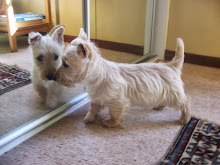



















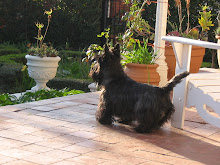






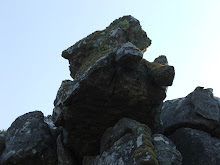





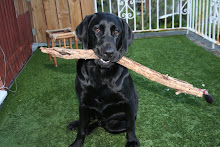





















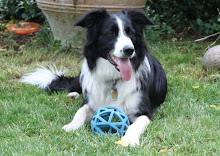















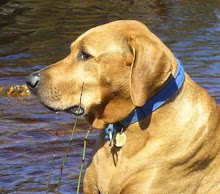




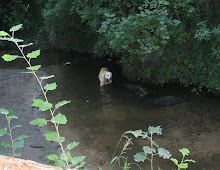



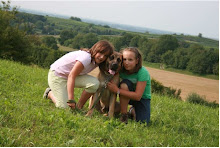

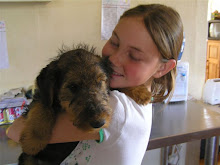








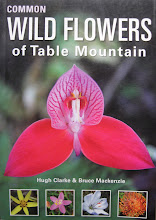


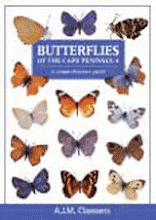






No comments:
Post a Comment